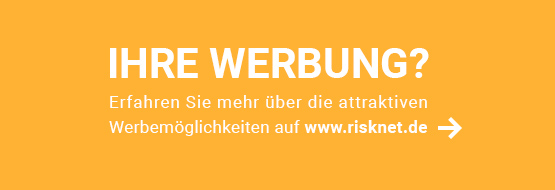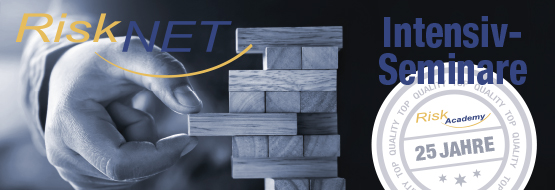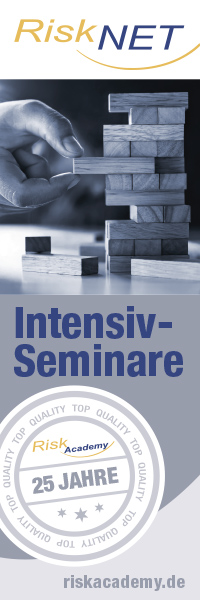Markenführung unter dem Gesichtspunkt des Risikomanagements erfordert ein Umdenken in den Unternehmen und ist ohne einen gewissen Aufwand nicht zu haben. Aber die Mühe lohnt: Gefahren können erkannt und ausgeschaltet werden, bevor sie sich im Markt messbar niederschlagen. Sonderheft "marken" der absatzwirtschaft (Sonderausgabe 2005), S. 140-143
8226 Downloads06.12.2006
Datei downloaden Mit der Revision der Eigenkapitalübereinkunft aus dem Jahr 1988, kurz Basel II genannt, verfolgt der Baseler Ausschuss für Bankenaufsicht das Ziel, ein flexibles risikosensitives System für die Quantifizierung von Kreditrisiken zu schaffen. Insbesondere durch die Verwendung bankintern bestimmter Ratings soll das Ausmaß des eingegangenen Kreditrisikos bei einem Geschäft und damit die Höhe des für dieses Risiko als Puffer vorzuhaltenden Eigenkapitals ermittelt werden. Je schlechter das Rating eines Kunden ist, desto mehr Eigenkapital muss ein Institut für einen Kredit an diesen Kunden vorhalten. Basel II stellt die Ermittlung eines risikosensitiven Bonitätsgewichts für eine Forderung oder eine Geschäftsart in den Mittelpunkt der Kreditrisikoquantifizierung. Wählt ein Institut den internen Rating-Ansatz (Internal Ratings-Based Approach, IRB) als Alternative zum obligatorischen Standardansatz, hat es die Wahl zwischen dem Basisverfahren und dem fortgeschrittenen Verfahren.1 Im IRB-Ansatz wird das Bonitätsgewicht insbesondere von dem Parameter „Ausfallwahrscheinlichkeit (Probability of Default; PD)“ und einer vom Baseler Ausschuss vorgegebenen Risikogewichtsfunktion bestimmt (IRB-Formel). [Autoren und Quelle: Hermann Schulte-Mattler und Ulrich Daun, in: RATINGaktuell, Heft 3 Juni/Juli, S. 66-71]
6472 Downloads04.12.2006
Datei downloaden Ende Juni 2004 veröffentlichte der Baseler Ausschuss für Bankenaufsicht das endgültige Basel-II-Papier. Im Rahmen des Internal Ratings-Based Approach (IRB-Ansatz) wird den Instituten damit erstmalig die Anwendung bankinterner Rating-Systeme zur Berechnung der Eigenkapitalunterlegung gestattet. Wie Ihnen unser Beitrag zeigt, kann die Qualität des verwendeten Rating-Systems durch die Trennschärfe beschrieben und grafisch bzw. numerisch angegeben werden. [Autoren und Quelle: Hermann Schulte-Mattler, Ulrich Daun und Thorsten Manns, in: RATINGaktuell, Heft 6 Dezember/Januar, S. 46-52]
18797 Downloads04.12.2006
Datei downloaden Prozesskostenfinanzierung kann als strategisches Instrument im Rahmen von Risikomanagement und Bilanzierung nach IFRS/IAS eingesetzt werden. Der Grund dafür ist einfach: Durch gezielten Einsatz der Expertise von Prozesskostenfinanzierern bei der Bewertung von Aktiv- und Passivprozessen entstehen finanzielle Spielräume für Unternehmen, die bisher vernachlässigt worden sind. Die voraussichtlichen Kosten, die ein Aktivprozess verursacht, brauchen bei Übernahme des Prozesses durch einen Prozesskostenfinanzierer nicht mehr passiviert zu werden. Der Cash-Flow im Unternehmen erhöht sich dadurch entsprechend. Die Bewertung einer Forderung durch einen Prozesskostenfinanzierer ist sehr viel präziser als die durch hauseigene Juristen oder Anwälte. Das hängt mit den Ratingverfahren zusammen, die von Prozesskostenfinanzierern entwickelt worden sind. – Die Treffersicherheit der Prozessergebnisbewertung steigt nach ersten empirischen Erfahrungen von ca. 53 Prozent auf über 70 Prozent an. Im Ergebnis entstehen deutliche Finanzierungsvorteile durch den strategischen Einsatz von Prozesskostenfinanzierung im Unternehmen. Daraus wiederum resultieren Rechtspflichten im Rahmen der Bilanzierung nach IFRS/IAS und im Rahmen des Risikomanagements nach § 91 Abs. 2 AktG. Daraus folgt, dass der Einsatz von Prozesskostenfinanzierern im Unternehmen nicht nur zweckmäßig, sondern in gewissen Grenzen auch rechtlich geboten sein kann. Vorstände, die die Möglichkeiten der Risikobewertung durch Prozesskostenfinanzierer in Zukunft nicht ausnutzen, verletzen somit ihre Sorgfaltspflichten gegenüber dem Unternehmen und haften nach § 93 AktG auf Schadensersatz.
10643 Downloads28.11.2006
Datei downloaden Der Beitrag erläutert die rechtlichen Grundlagen, aus denen sich für die Organe einer Kapitalgesellschaft mit Sitz in Deutschland die Verpflichtung ergibt, ein Risikomanagementsystem einzurichten und zu betreiben, sowie, welche rechtlichen Mindestanforderungen für die Ausgestaltung eines solchen Systems gelten.
11267 Downloads28.11.2006
Datei downloaden Risk & Fraud Management bedarf einer ganzheitlichen, interdisziplinären und berufsbildübergreifenden Forschung und Ausbildung, um die wachsenden und komplexen Anforderungen an ein modernes Management abzubilden. Angesichts der Vielschichtigkeit sowie umfassender materieller und immaterieller Folgen wirtschaftskrimineller Handlungen stellt es für das Management eine Herausforderung dar, ein effizientes Risk & Fraud Management System zu organisieren und in die Organisationsstrukturen zu integrieren. Dabei besitzen Unternehmen sowohl ein passives als auch ein aktives Organisationsverhalten im Hinblick auf Präventionsmaßnahmen oder forensische Prüfungen. Ersteres ist in diesem Kontext als organisatorische Reaktion auf Veränderungen z. B. der gesetzlichen Rahmenbedingungen zu sehen, während letzteres durch die Gestaltung einer effizienten Organisationsstruktur zu würdigen ist.
10334 Downloads28.11.2006
Datei downloaden Standard credit portfolio models do not model market risk factors, such as risk-free interest rates or credit spreads, as stochastic variables. Various studies have documented that a severe underestimation of economic capital can be the consequence. However, integrating market risk factors into credit portfolio models increases the computational burden of computing credit portfolio risk measures. In this paper, the application of various importance sampling techniques to an integrated market and credit portfolio model are presented and the effectiveness of these approaches is tested by numerical experiments. The main result is that importance sampling can reduce the standard error of the percentile estimators, but it is rather difficult to make statements about when the IS approach is especially effective. Besides, the combination of importance sampling techniques originally developed for pure market risk portfolio models with techniques originally developed for pure default mode credit risk portfolio models is less effective than simpler two step-IS approaches. [Author: Peter Grundke, Department of Banking, University of Cologne]
9864 Downloads28.11.2006
Datei downloaden Using a modified version of the methodology used in Elton et al. (2001), this paper reexamines how default, taxes and systematic risk measures influence corporate credit spreads for investment grade corporate bonds for the 1987-1996 time period. The methodological improvements not only change the estimates for the default and tax components of credit spreads materially but the factors from the Fama and French three-factor model no longer help to explain the remaining variation in credit spreads. In contrast, a good portion of the variation in the remaining (unexplained) spread is explained by measures of aggregate bond liquidity. [Author: Lawrence Kryzanowski, Wassim Dbouk (Concordia University)]
9155 Downloads28.11.2006
Datei downloaden The probability of default (PD) is one of the key variables in credit risk management. By using PD estimates as input to pricing and capital requirement calculations, one should be concerned of how good these estimates are. Confidence intervals are thereby a convenient way to assess the range that covers the true, but unknown parameter with a certain confidence probability. In this paper, we discuss the issues occurring in the construction of confidence intervals for a binomial proportion, and assess the magnitude of estimation uncertainty for exemplary but representative credit portfolios. To give an economic meaning to the range of errors, we translate the PD confidence interval into a risk-weight confidence interval by applying the Basel II IRB approach. The two main conclusions are: (i) The magnitude of estimation uncertainty can be substantial and is economically relevant. (ii) The choice of confidence interval matters and differences between intervals can be large. [Author: Jochen Lawrenz, Department of Banking & Finance, University of Innsbruck]
12943 Downloads28.11.2006
Datei downloaden We propose a new method to compute option prices based on GARCH models. In an incomplete market framework, we allow for the volatility of asset return to differ from the volatility of the pricing process and obtain adequate pricing results. We investigate the pricing performance of this approach over short and long time horizons by calibrating theoretical option prices under the Asymmetric GARCH model on S&P 500 market option prices. A new simplified scheme for delta hedging is proposed. [Author: Giovanni Barone-Adesi (University of Lugano), Robert Engle (New York University - Department of Economics; National Bureau of Economic Research), Loriano Mancini (University of Zurich - Swiss Banking Institute)]
7558 Downloads28.11.2006
Datei downloaden RiskNET Intensiv-Seminare
Die Intensiv-Seminare der RiskAcademy® konzentrieren sich auf Methoden und Instrumente für evolutionäre und revolutionäre Wege im Risikomanagement. Die Seminare sind modular aufgebaut und bauen inhaltlich aufeinander auf (Basis, Fortgeschrittene, Vertiefung).
Seminare & Konferenzen
Neben unseren Intensiv-Seminaren und Webinaren, die im Rahmen der RiskAcademy angeboten werden, stellen wir Ihnen hier themen- und branchennahe Veranstaltungen vor.
Sie haben Interesse Ihre eigene Veranstaltung an dieser Stelle zu veröffentlichen? Buchungsmöglichkeiten ansehen »
The market can remain irrational longer than you can remain solvent.
Risikomaße und BewertungDownloads: 66719
Frühwarnsysteme im UnternehmenDownloads: 63920
E-Book: Cash Flow at Risk und Value at Risk in UnternehmenDownloads: 58414
Operational risk – COSO re-examinedDownloads: 53247
Marktstudie Rating-Software für UnternehmenDownloads: 51774
FIRM Jahrbuch 2016 / FIRM Yearbook 2016Downloads: 48416
PCo-Studie: Quantifizierung operationeller RisikenDownloads: 47227
Die Assekuranz am Scheideweg – Ergebnisse der ersten Benchmark-Studie zu Solvency II Downloads: 44945
Risikomessung - Normalverteilung oder Mean-Reversion-ModelleDownloads: 41373
Risk Benchmark-Studie 2011: Risiko- und wertorientierte Steuerung in der AssekuranzDownloads: 40470






